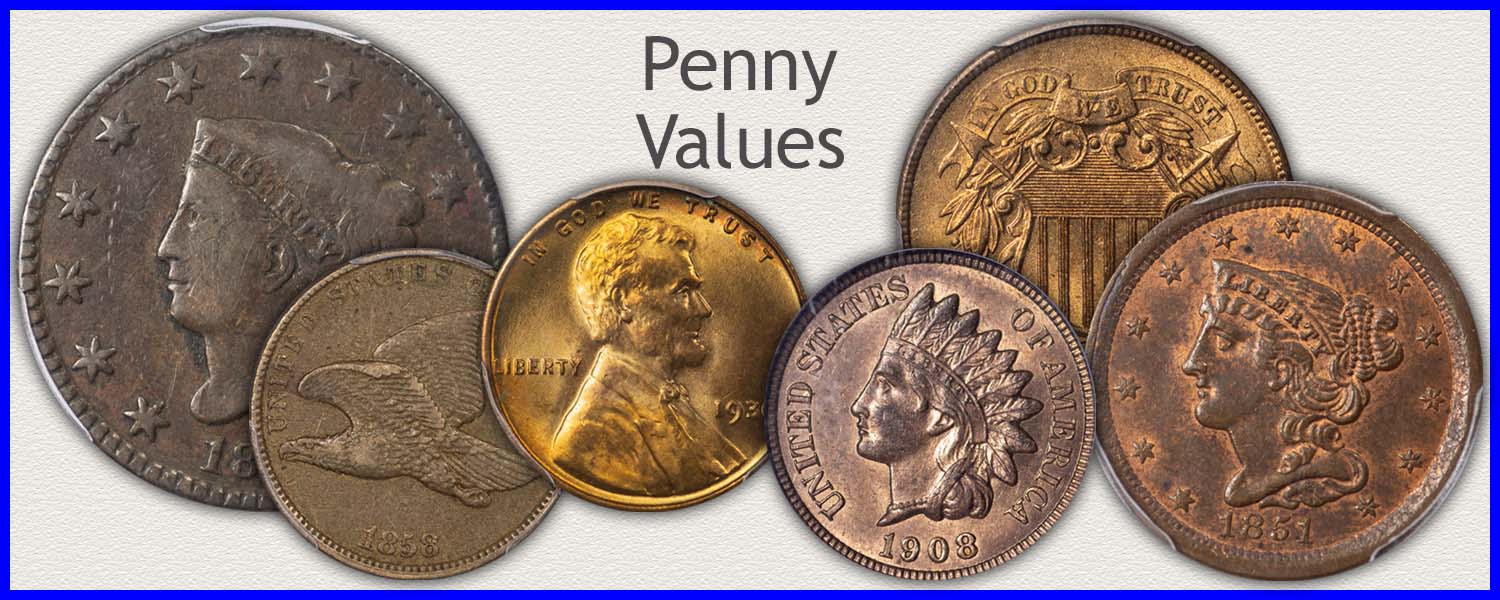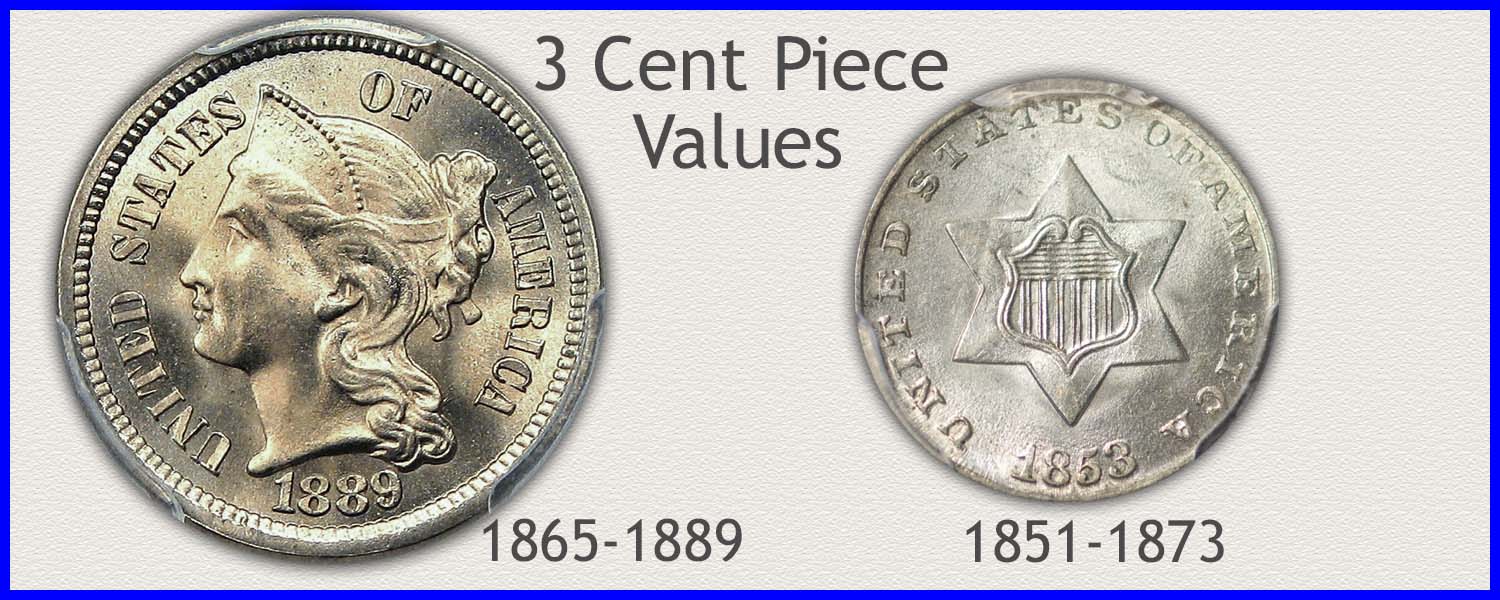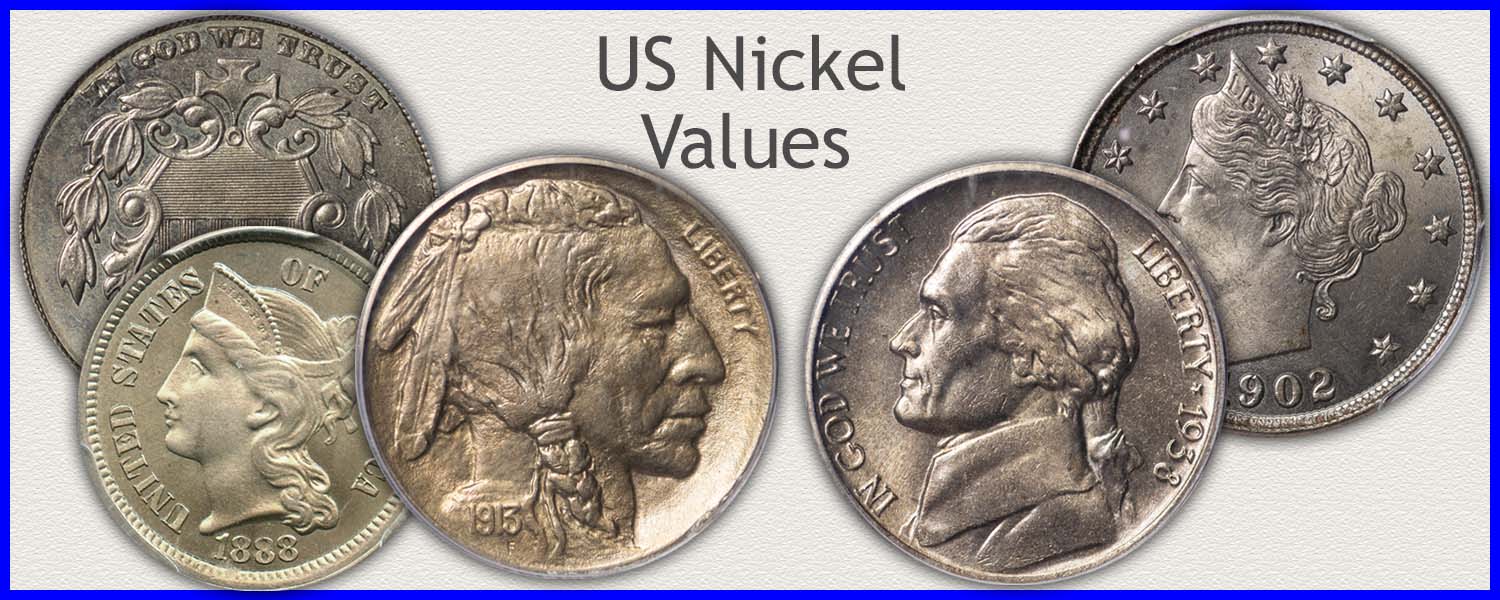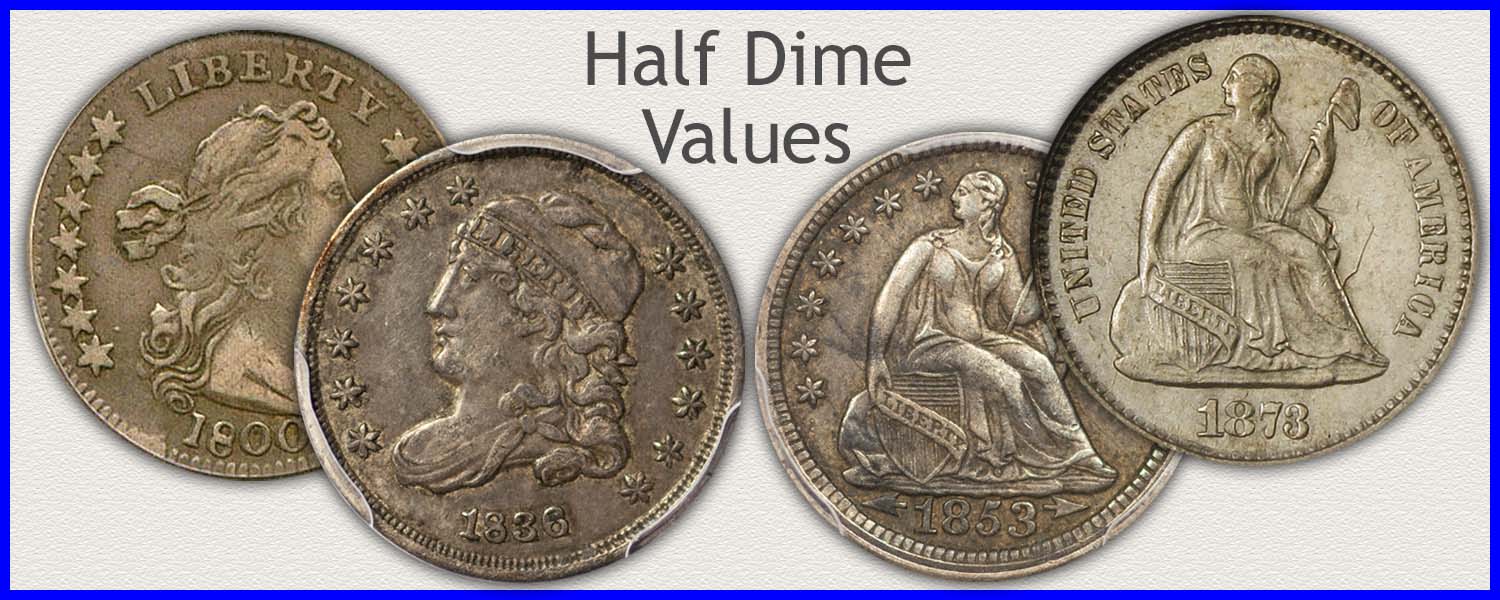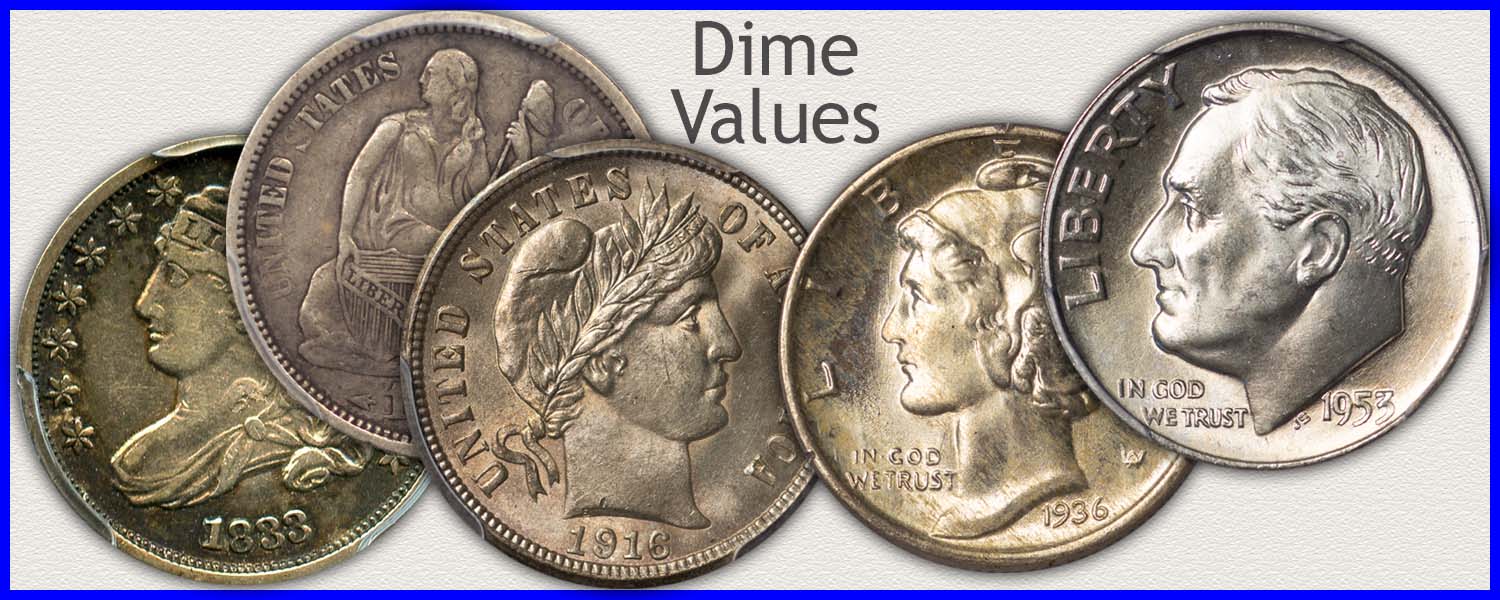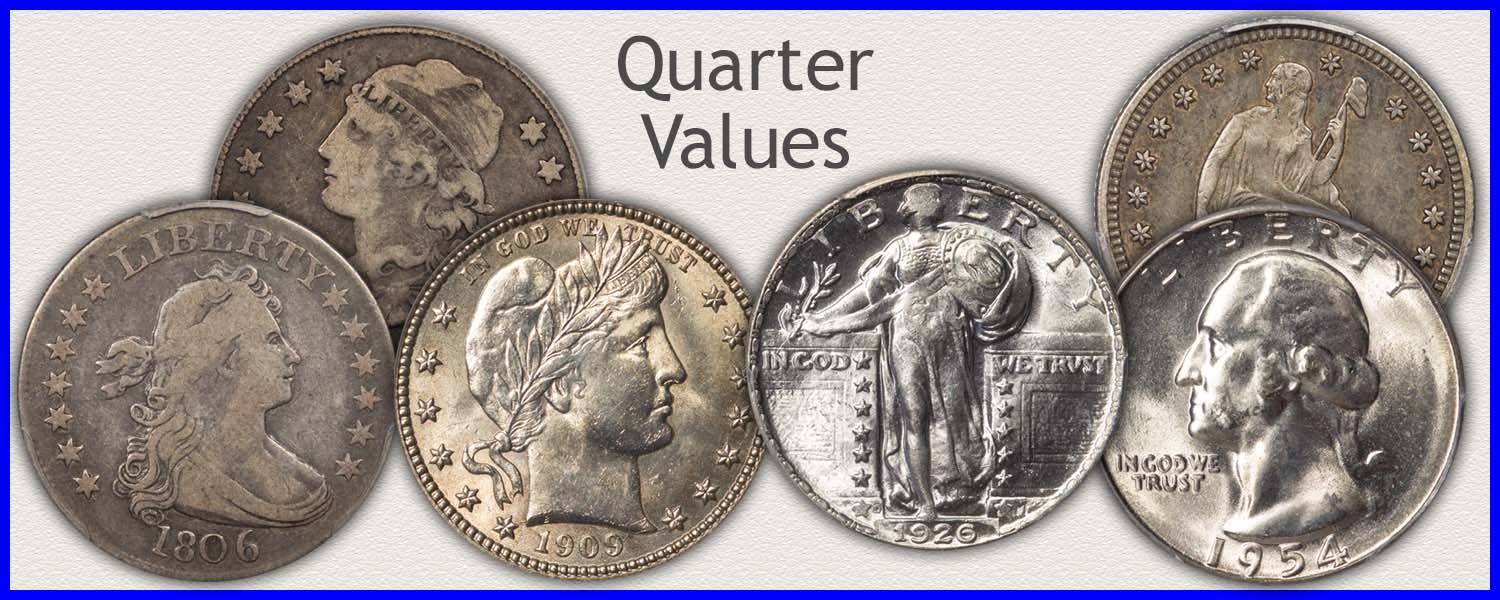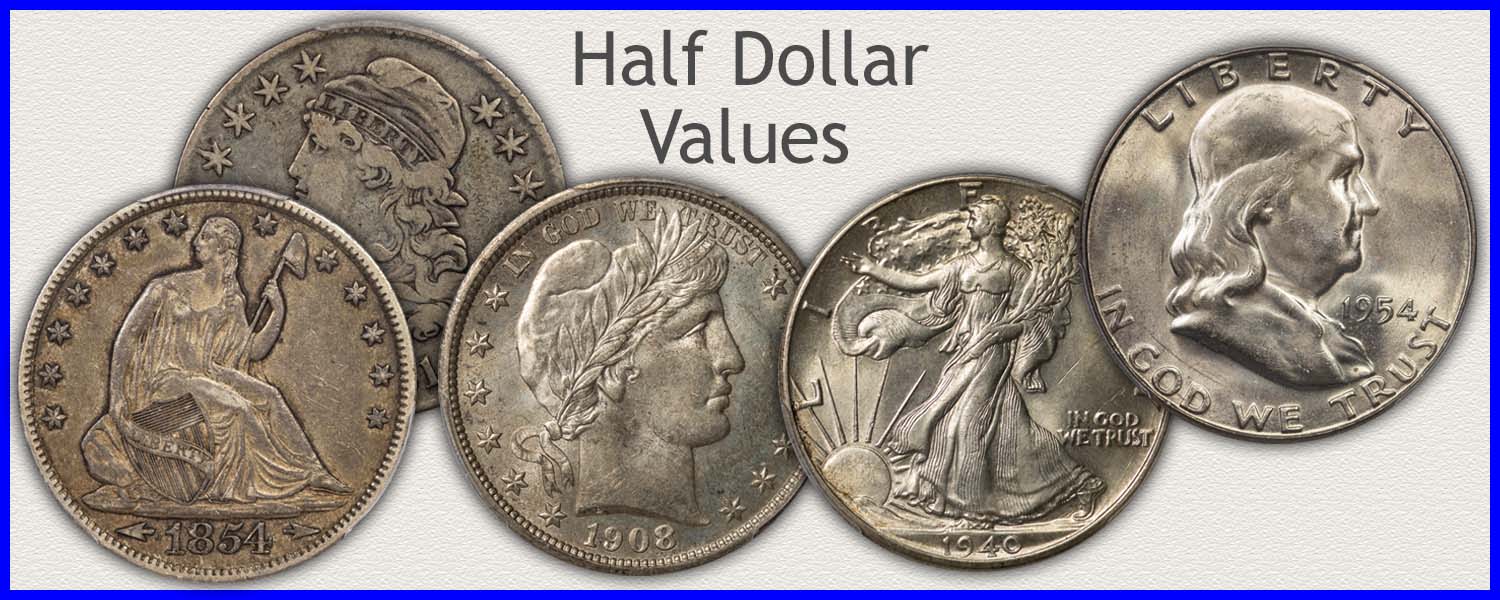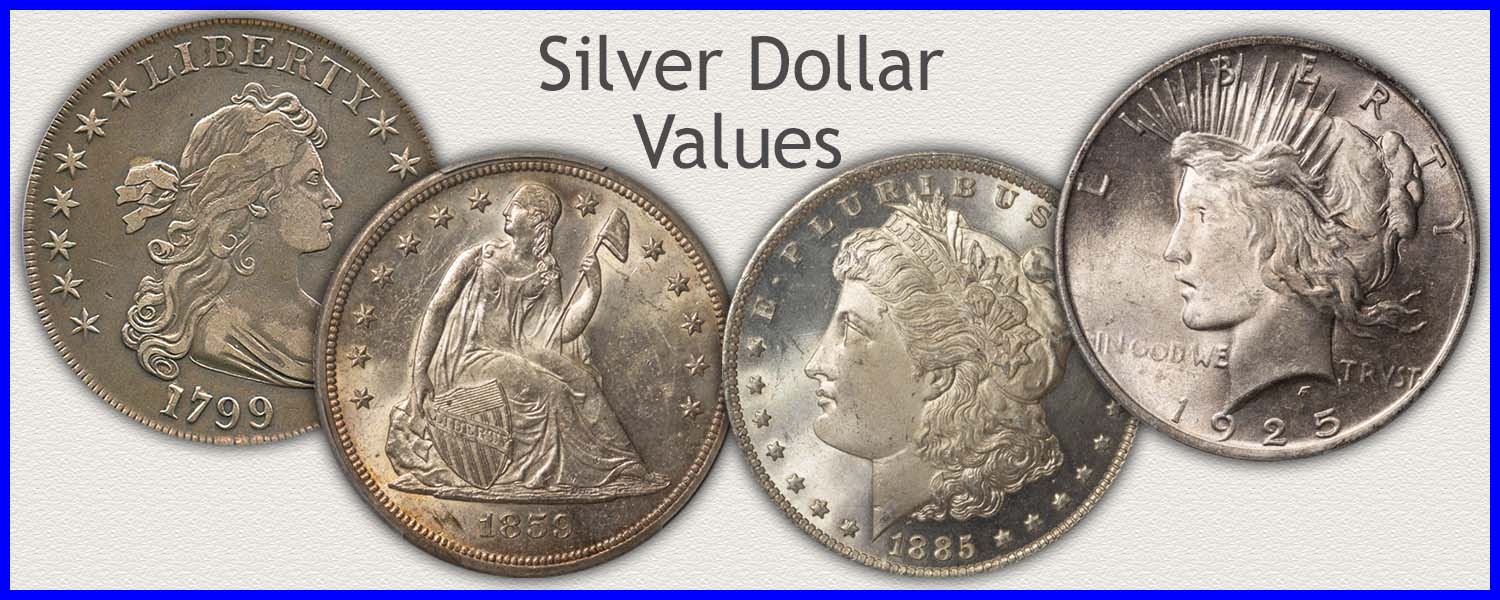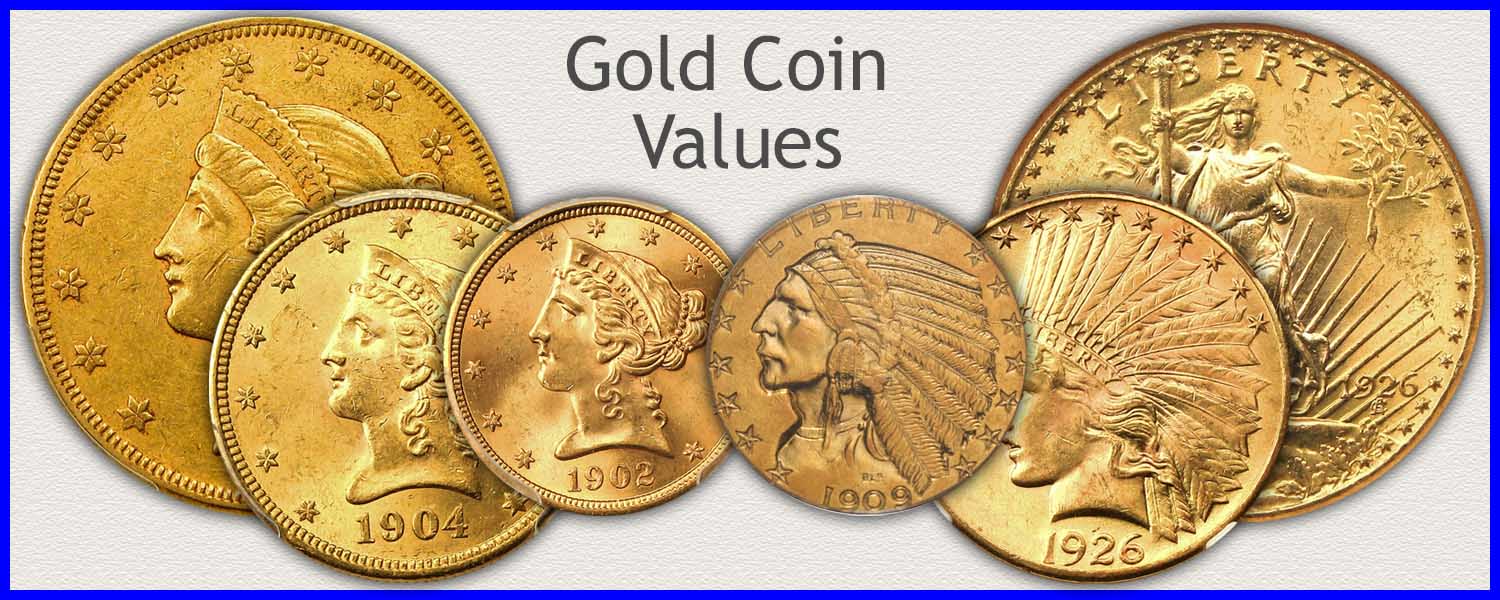Coin Values Moving with Precious Metals: Up-Dated 3/17/2025: Gold $2985 | Silver $33.69
Coin Value Guide | How to Value an Old Coin Collection
Coin value guide goes through the process of how to value a coin collection. Using a step by step method, the important factors to value are identified.
First, set up a work area giving room to organize the collection as the process begins. A magnifying glass is useful, as well as a single light source close by. Both help bring out small details important to an accurate evaluation.
When needed: Print the Coin Values Worksheet to list individual pieces in your collection and record their values.
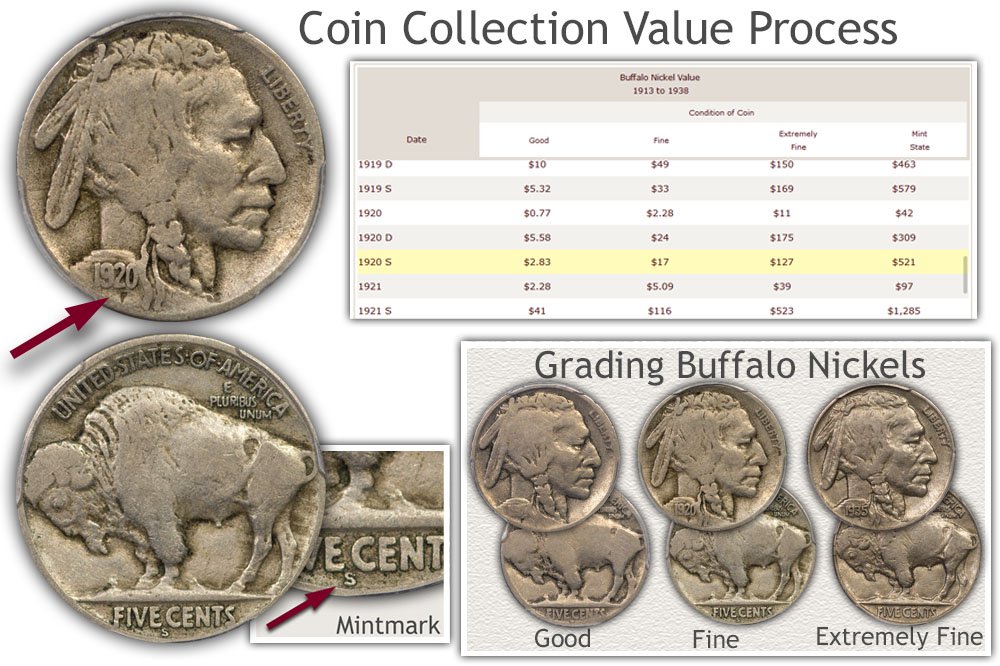
Proceeding through a step by step method identifies the important factors required to determine how much a box of old coins is worth.
Coin Value Guide: Steps to Value:
- Step 1: Recognize the Different Series of Coins - Images highlight the different designs and series found in the various denominations of US coinage.
- Step 2: Date and Mintmark Variety - Within series, dates become important to value, identify all dates accurately.
- Step 3: Grading Condition - Judging condition is done with a close inspection and comparing to standards for the grade.
- Step 4: Special Qualities - Old coins because of advanced age, metal alloy, and preservation have qualities either raising or lowering value. Each series explores the possibilities.
Step 1: | Recognize the Different Series of Coins
A convenient step to begin is separating the coins into each series. Cents in the collection are grouped as to Lincoln and Indian pennies. Continue with the other series, nickels are sorted by Buffalo, Jefferson, etc. Once done, referring to the specific coin page starts an in-depth evaluation. Note: Before going to a series page, continue through the next steps found below, helping understand the overall process.
Coin Value Guide | Gallery of Coin Series
Each image represents and links to the series | tap/click to continue and value a coin collection.
Gold Coins
$2.5 Liberty Gold Minted: 1840 to 1907
$2.5 Indian Gold Minted: 1908 to 1929
Five Dollar Liberty Gold Minted: 1839 to 1908
Five Dollar Indian Gold Minted: 1908 to 1929
Ten Dollar Liberty Gold Minted: 1849 to 1907
Ten Dollar Indian Gold Minted: 1908 to 1933
Step 2: | Date and Mintmarks Plus Varieties are Identified
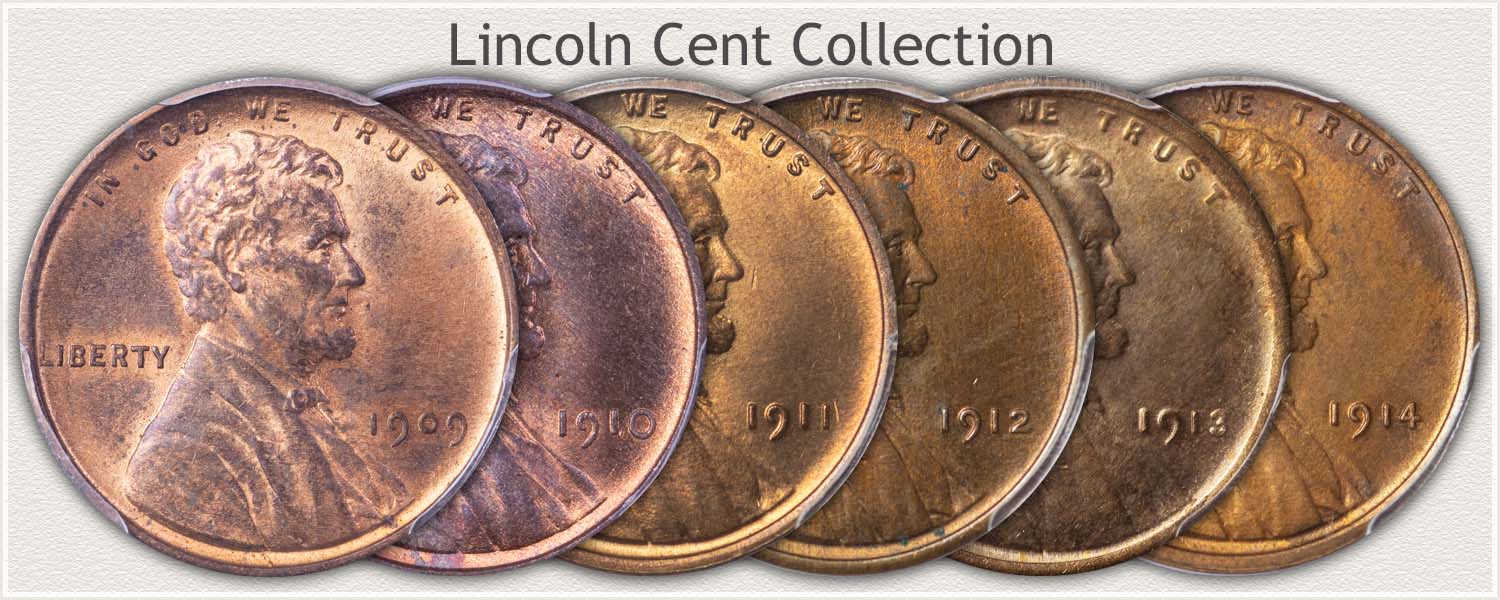
Coin collections are typically organized by dates within a series. Lincoln cents are collected with coins of each date represented. With your collection, pick one of the series and arrange the coins by date. Value charts list in order of date. Note: Check and confirm the date on the coin first; only then refer to the holder and adjust the info on the holder to match if needed.
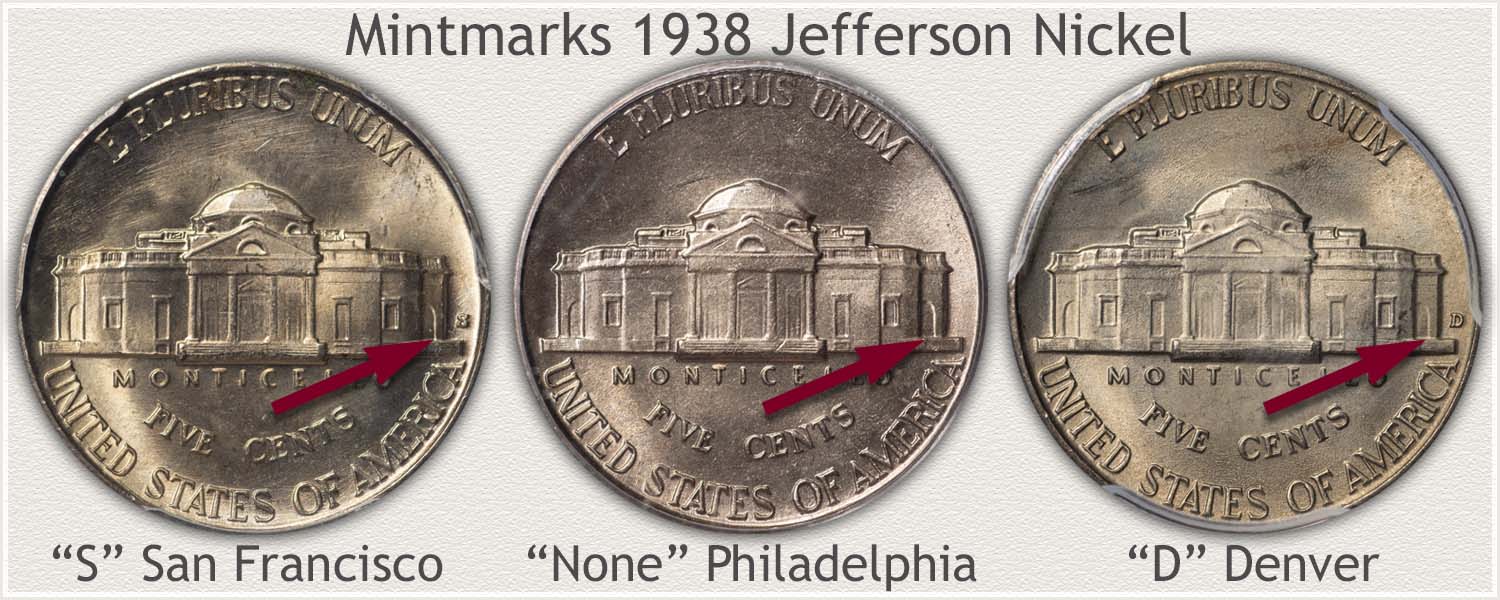
Second part is locating any mintmarks, further identifying the variety of coin. Mintmarks are used to indicate the particular mint striking the coin. San Francisco mint used an "S" mark, Denver is identified by the "D" mintmark. In many years more than one mint was involved in producing a particular coin. An example; Jefferson nickels of 1938 were struck at three different mints all with different values.
Dates and Mintmarks are identified and described as part of each series page.
🔎A gallery of images and links to each series and locating mintmarks is in Step 1 above.
Step 3: | Grading Condition | Coin Collection Values are Conditional
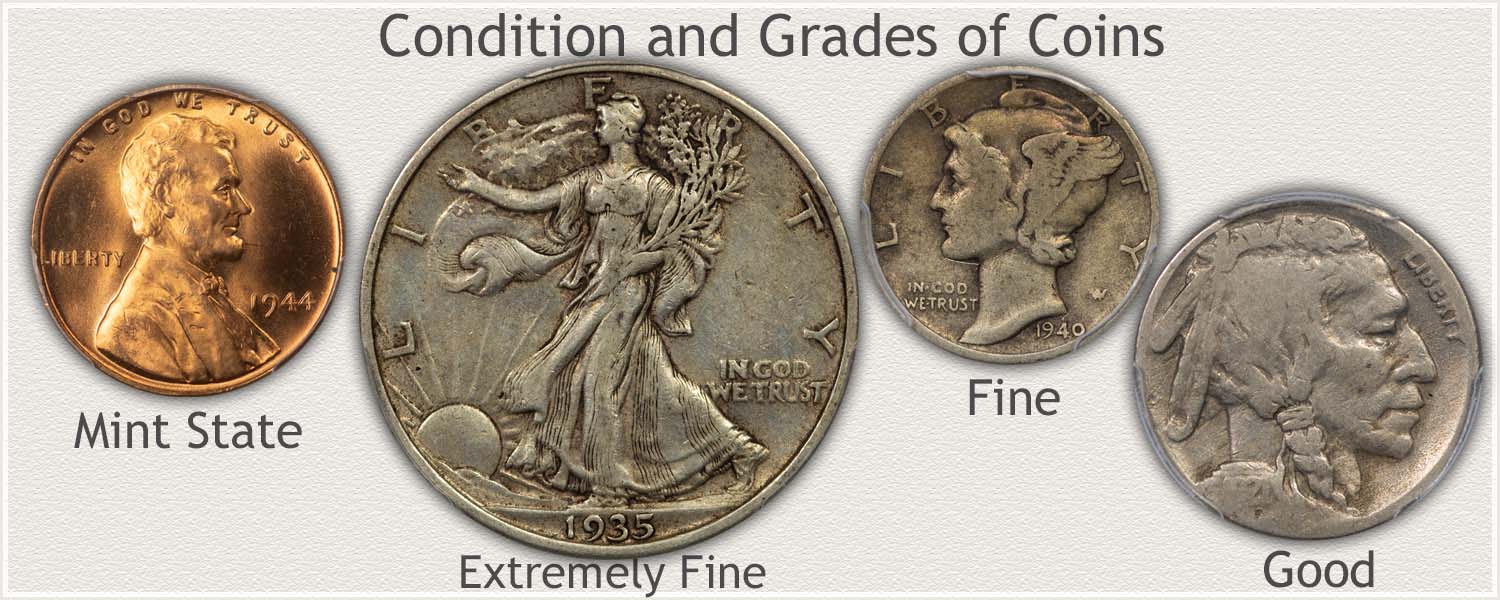
Condition of the coins in the collection has a large impact on value. Judging condition is done using images of various stages of wear as standards and comparing your coins. Each stage of wear is given a "Grade" defining the condition and is used as part of the range of value on charts. Note: Each series has its own set of grade examples specific to the coin.
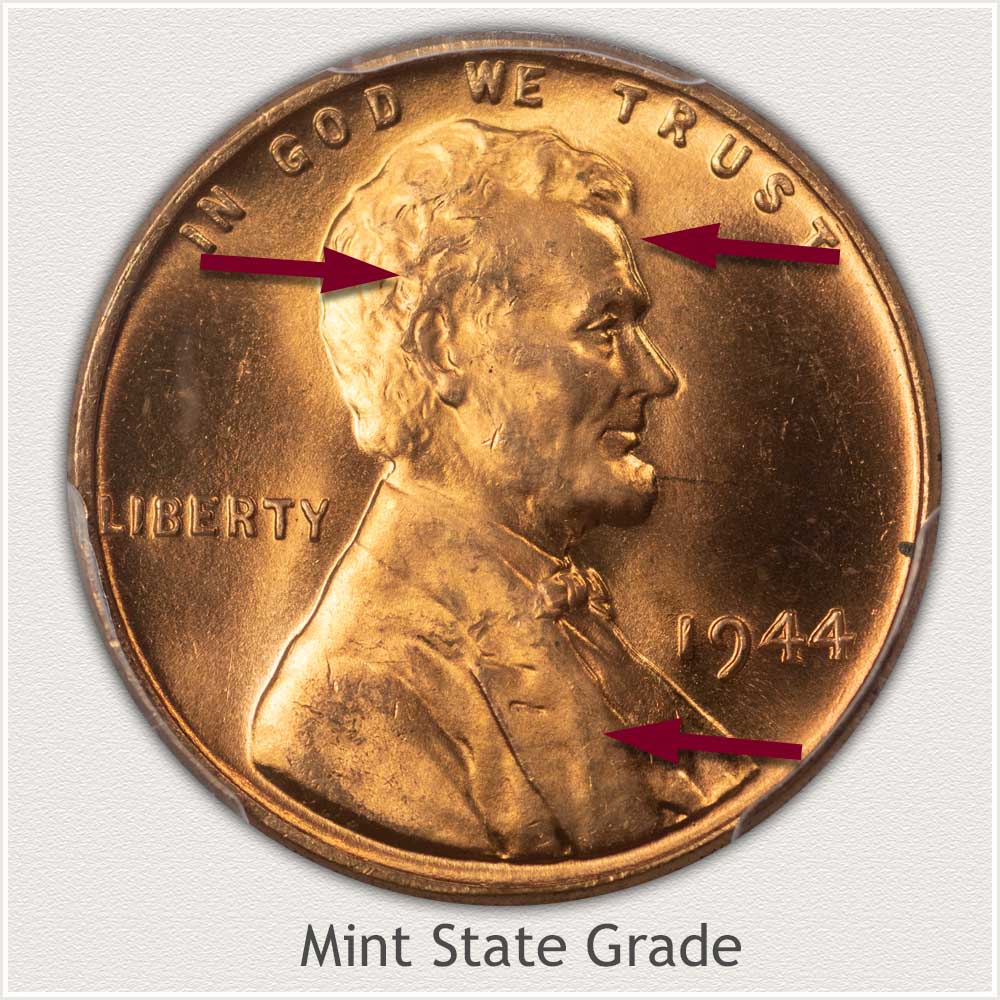
Mint State Grade: A coin with no wear to the surface is defined as Mint State Grade.
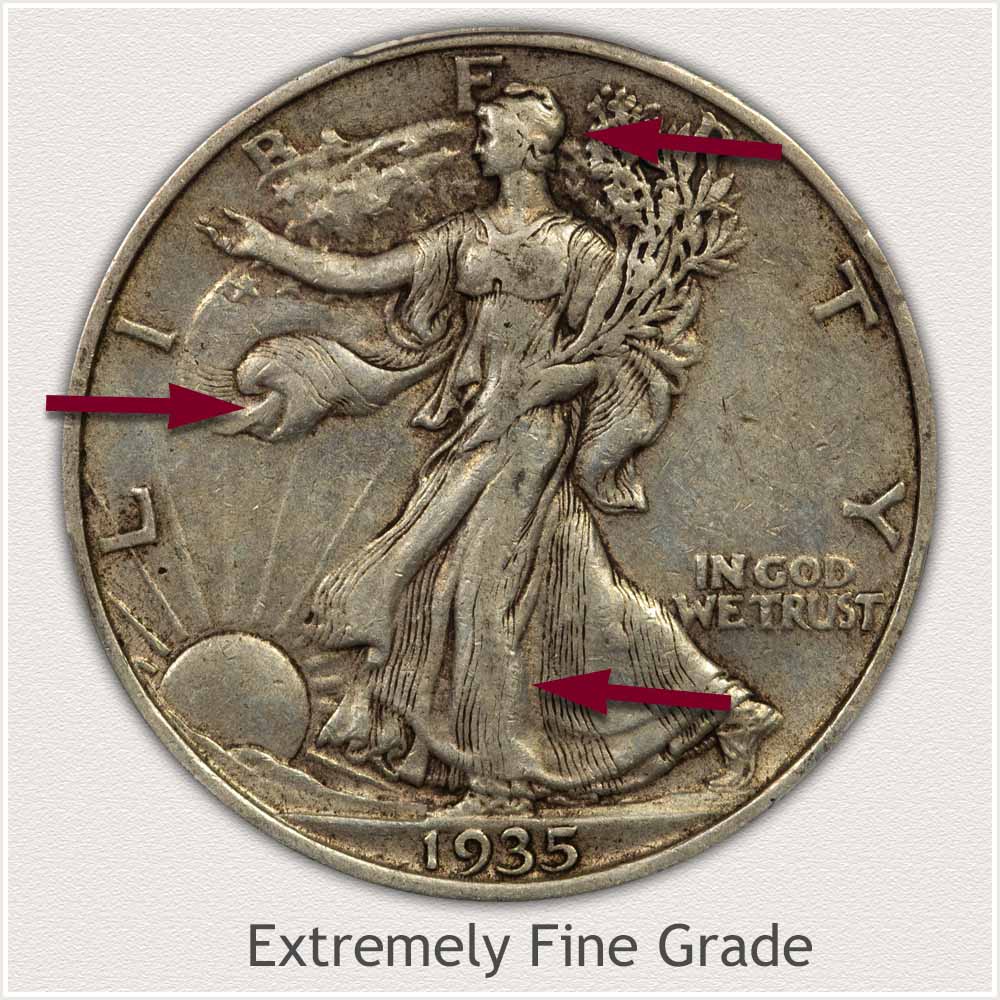
Extremely Fine Grade: Once a small amount of light wear is detected, a coin is defined as Extremely Fine Grade
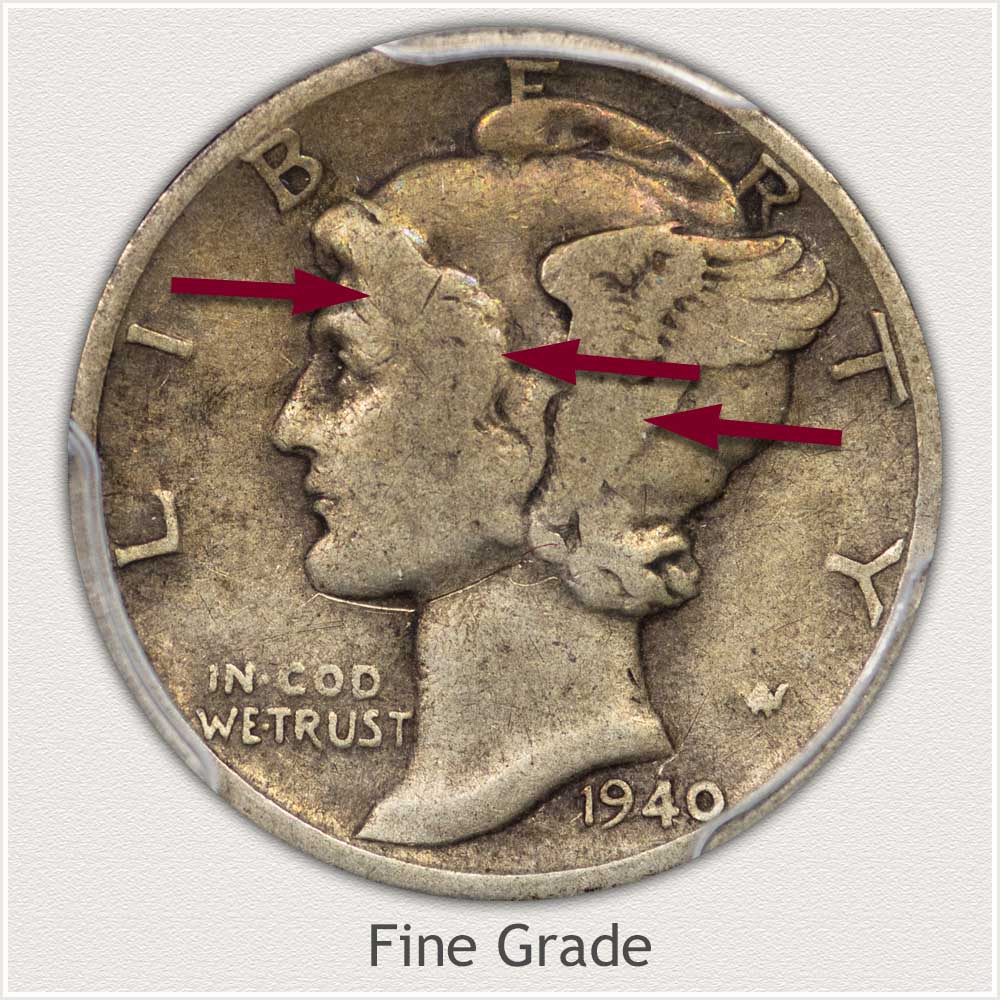
Fine Grade: The definition of Fine Grade is: moderate wear overall with fine, smaller details beginning to fade.
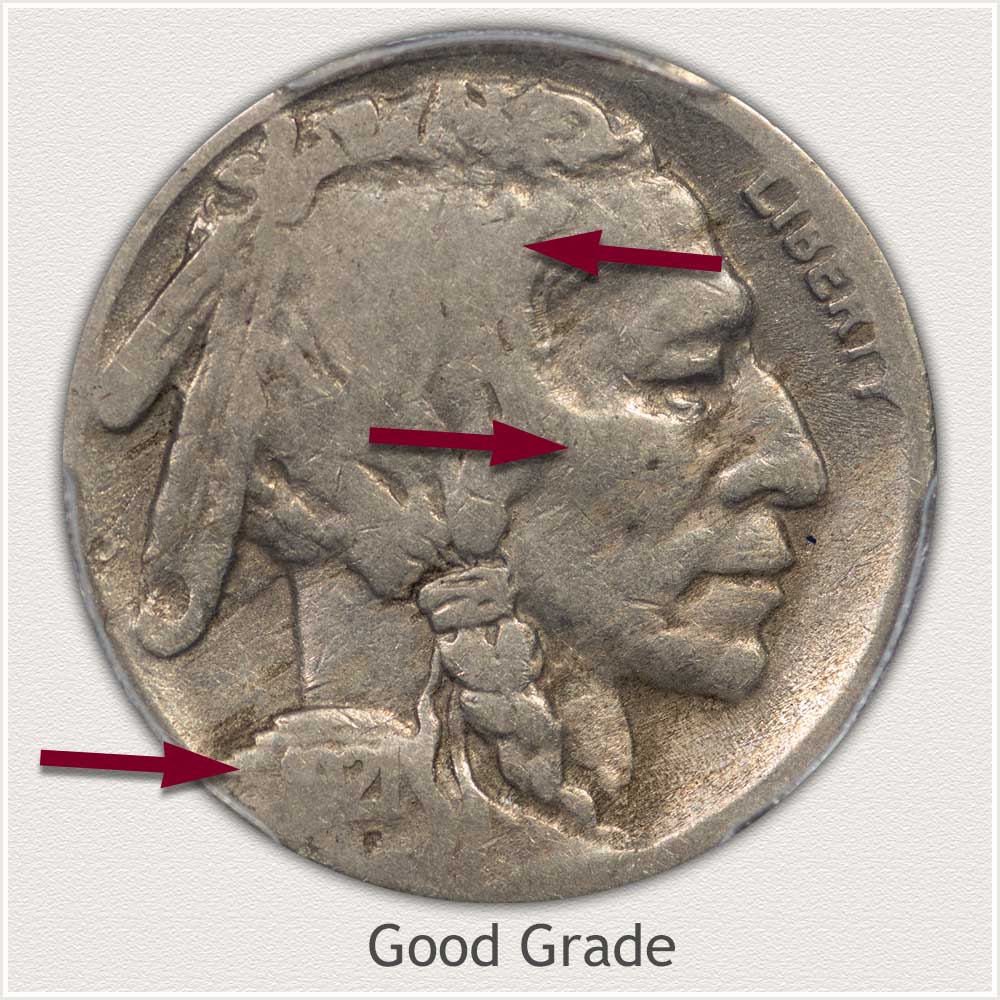
Good Grade: A coin worn to the point major designs are in outline and small details missing defines a coin in Good Grade.
Now, with the collection separated into each series and by date, judgement of condition begins. Next arrange each group by condition. Look for the heavily worn coins, and place these separate from better condition coins. They now begin to organize roughly by condition. A greater degree of accuracy is done when comparing each coin to the specific grading images for the series. Value of the coin collection is closer. Grading is a major step, takes a little time, however, is key.
Helping through the judging and grading steps are videos, images, and descriptions on each series page. With the organization of the coin collection you now have in place, plus the grading sections on each series, an accurate judgement of condition and value is made.
🔎A gallery of images and links to each series including grading coins is in Step 1 above.
Step 4: | Recognizing Special Qualities Enhancing Value
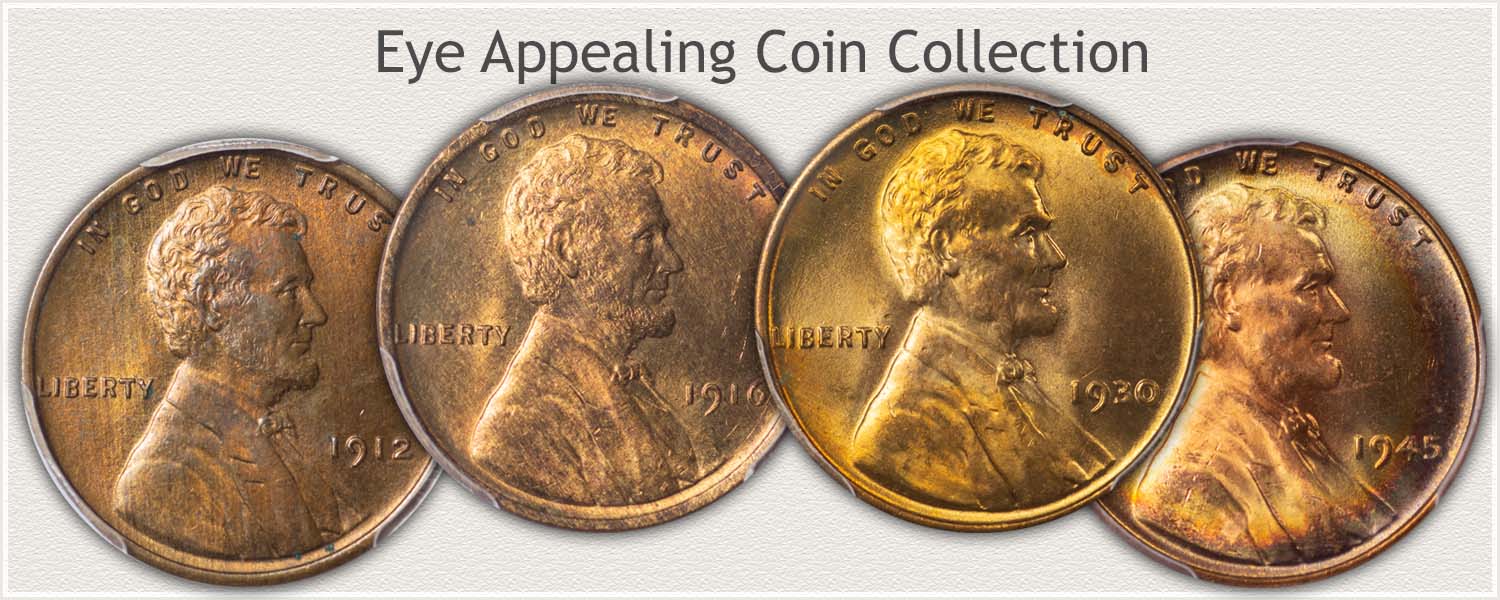
Each series of coins have certain characteristics raising or lowering value. Picking just one special quality of many; the Lincoln pennies above represent pleasing toning on copper coins.
When first minted a bright lustrous coin is produced. Toning, a changing of color begins quickly. Copper pennies turn brown, as an example. Toning on coins is one trait that gives coins either, aesthetic appeal or lowers eye appeal.
Housed in an old coin collection, copper, nickel, and silver coins all tone, changing color over time. A collection of pennies often ranges in color from bright original reddish luster to shades of brown. Toning and other qualities are identified with each individual series.
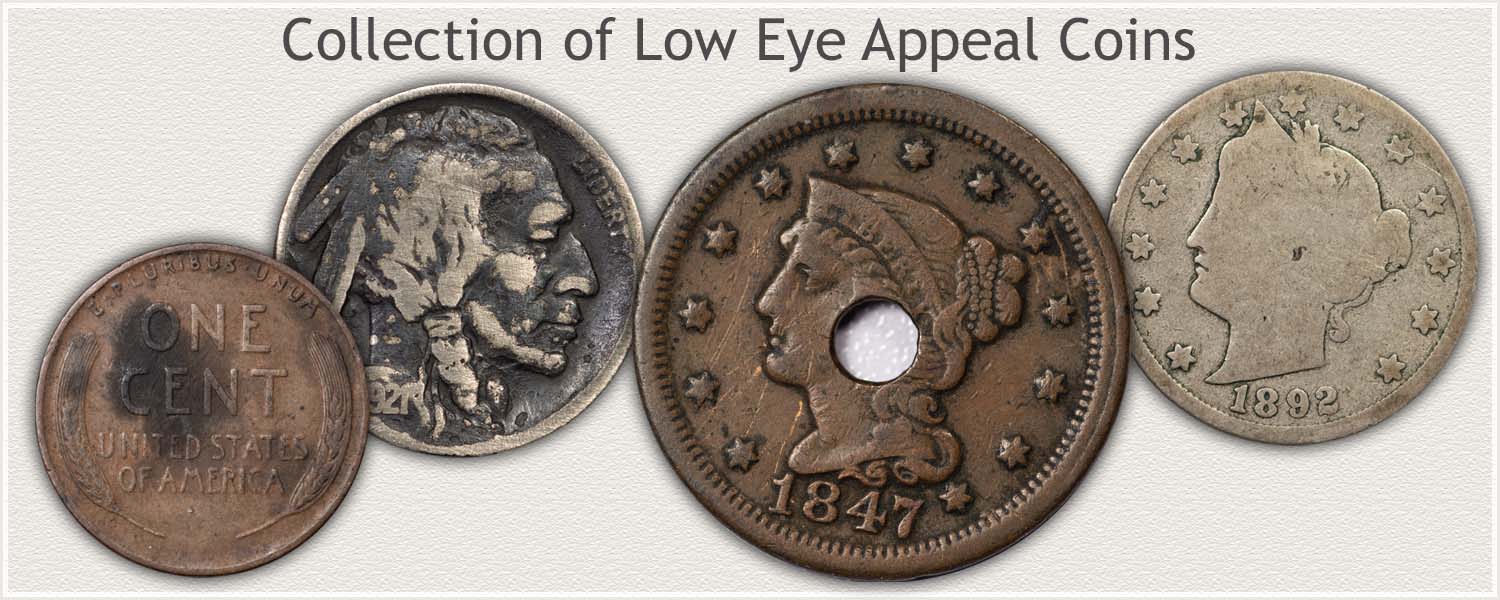
Avoiding damage is also a special quality. Circulating through commerce leaves many coins with problems. Other coins show the effects of the elements. Dark colored pennies and nickels are lowered in appeal. Some coins are worn almost smooth. Others damaged by heavy abrasions or even a hole is drilled through the center. Few of these are suitable to include in a coin collection. The key is eye appeal. Any distractions lower value. Comparing the eye appeal of the coins above identifies the higher demand and value of the coins in a collection.
Additional special qualities to each series are identified.
🔎A gallery of images and links to each coin series including special qualities is in Step 1 above.
Originality and Value of a Coin Collection
Originality: plays a large part in how to value a coin collection. Maintaining the coins in the same state as they are currently, is very important. Age has developed on each coin in unique ways, toning of the metal and the original surface is delicate. Original condition coins, those that have not been cleaned, altered, or mishandled in any way are at the top of the value scale in any grade.
Proceed with your evaluation over a soft surface, holding the coin by the edges only. Leave in existing holders and never attempt to clean any coin. This ensures inadvertent lowering of value.
Follow the steps above to evaluate coins. Print the Coin Values Worksheet to list individual pieces in your collection and record their values.
Coin Values | CoinStudy Articles
Safe Coin Storage | Recommendations
Recommendations on basic supplies that greatly improve coin storage. Providing for safe handling, preserving of value and organizing your box of old coins.
Grading Old Coins || Video Index
It is not always the combination of date and mintmark raising the value of your coin collection to the scarce level. Often, it's your coin's condition, or "grade" as referred to by collectors. Video index leads to grading the different series of coins.
Coin values are influenced by a series popularity. Large numbers of collectors create demand showing in premiums paid for coins. Collecting interests are ranked on charts by denomination and series. Understand how popular and solid values of a coin collection are.
Selling Coins | How to Get the Best Value
Selling coins for the highest price is achieved with planning. Research and organize well, value your coin collection accurately, and then finding and selling to the right buyer equals excellent results.
Old US Penny Values are Rising
Coin values are determined by using the grading images to judge condition then checking the date and values on the charts provided. Discover all the rare varieties, dates and mintmarks.
★Return to the Coin Values Discovery home page... from Coin Value Guide An excellent index with images and text links to all coin series, from Cents to Gold. Value charts, grading images with descriptions uncovers how to value a coin collection.
